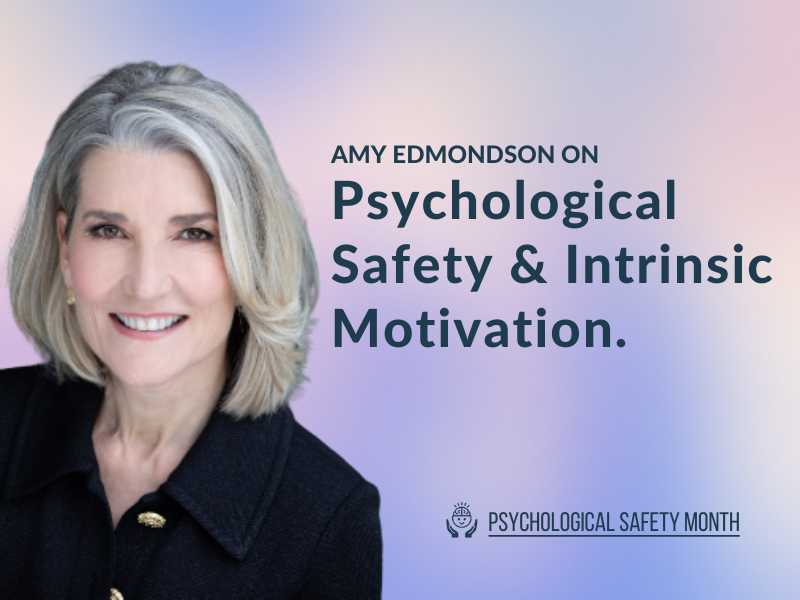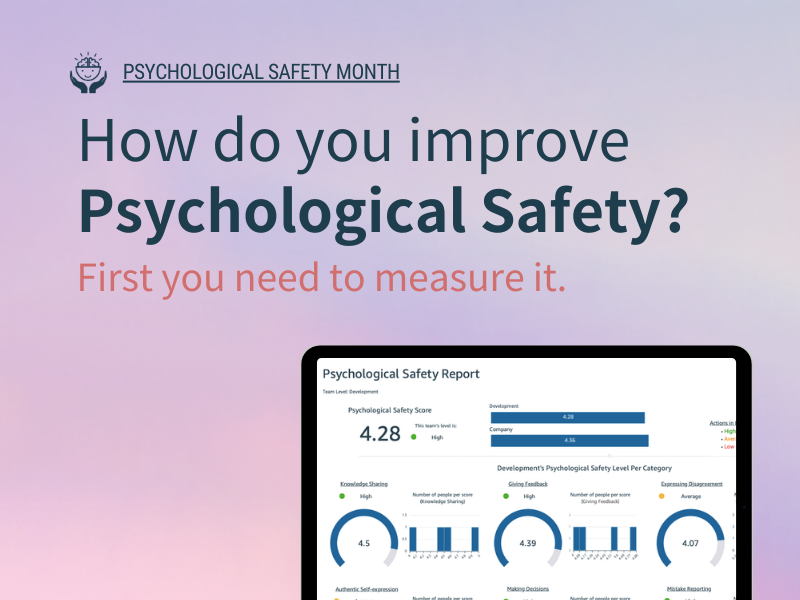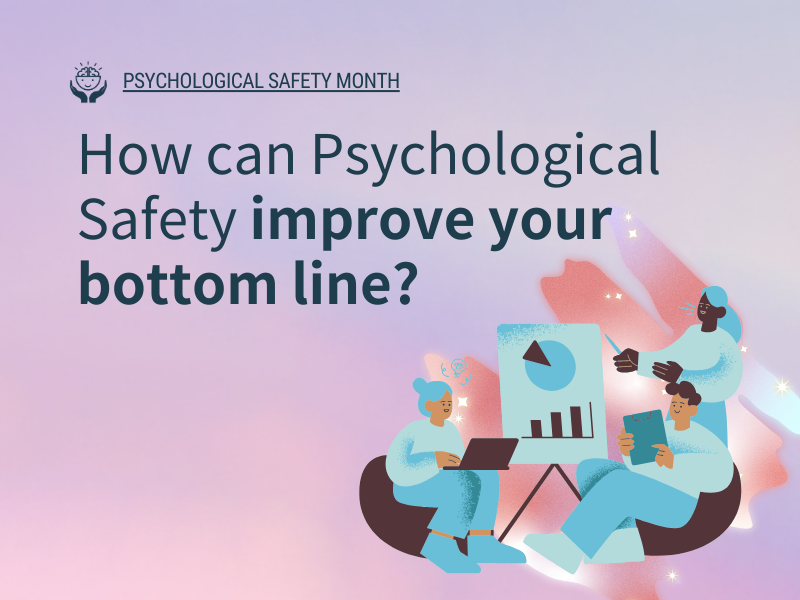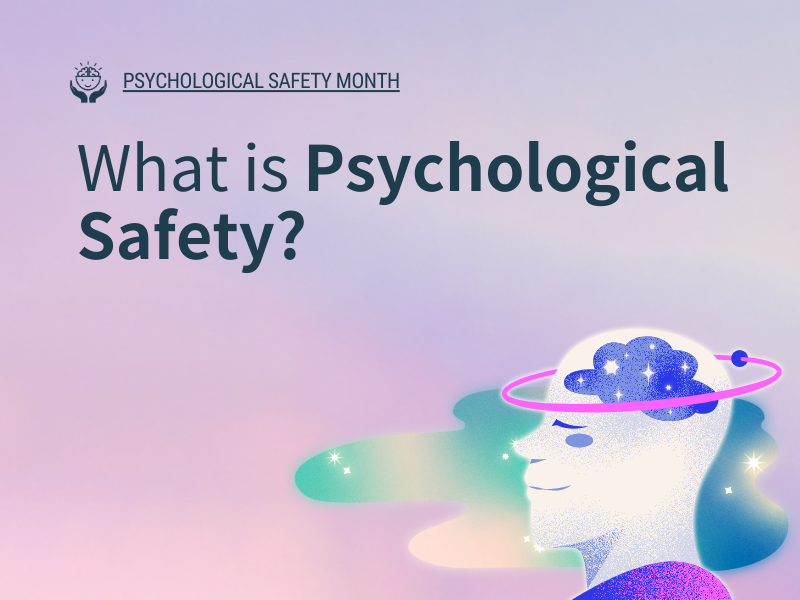Back when she was an early PhD researcher, Amy Edmondson studied whether better teamwork in a hospital setting would predict lower error rates. However, to her surprise, the results were counter-intuitive: the data showed that better teams had higher error rates. The reason for this, as she discovered, was that the better teams were more open, willing and able to report errors and talk about them. “There was a toxic interpretation of human error,” she says. “The healthier teams realize things can go wrong.” Edmondson later called this phenomenon “Team Psychological Safety,” a concept that has gone on to become hugely influential for creating effective teams around the world.
Today, Edmondson, who is Novartis Professor of Leadership and Management at the Harvard Business School, is the authority on Psychological Safety globally, and has authored several books, including The Fearless Organization: Creating Psychological Safety in the Workplace for Learning, Innovation, and Growth. In the following one-on-one interview, Edmondson shares invaluable insights into Psychological Safety, the interplay between Psychological Safety and Intrinsic Motivation, and how companies can create teams where everyone feels safe and can take risks.
This interview has been edited for brevity and clarity.
For anyone who has never heard of Psychological Safety, how do you define it?
I define it as the perception that candor is welcome. More formally, I say it’s a belief that one can take the interpersonal risks of speaking up with questions, concerns, mistakes, or dissenting views.
How do you define that risk?
An interpersonally risky behavior would be anything where, in some circumstances, you might pause and hold back out of concern for what others might think of you. Oh, if I ask for help, they’ll think I’m incompetent. Or: If I ask a question, they’ll think I’m ignorant. If any of those thoughts are going through your head, you’re not in a psychologically safe environment, and you’re hoping or wanting or at least considering engaging in interpersonal risk.
Is there a clear, obvious sign of Psychological Safety—or its opposite—in an environment? For example, if I’m applying for a job, is there one thing that you’d recommend we look out for?
If you’re not doing a survey—which most of the time we’re not—to find that out, what I look for is kind of a healthy mix of agreeing and disagreeing, a healthy mix of statements and questions, of “all’s well” versus asking for help. There should be a kind of lively buzz of people engaging with each other, rather than a tiptoeing and politeness of waiting and seeing what the boss says or what the authority says.
You say the ability to speak up is not about being confident or courageous as an individual, but that it’s a team feature. But not everyone perceives risk in the same way. If there’s a team full of people who are comfortable speaking up, does that mean there is no risk in that context?
There are individual differences; some people are simply more “out there” than others, more willing to speak up in any setting than others. And at the same time, there is a kind of emergent property of any group where a set of shared expectations will take shape, reasonably quickly.
When we’ve measured Psychological Safety across groups in the same organizations, what we find is that the group-level differences are stronger than the individual differences. That doesn’t mean that there isn’t, in many groups, ‘that’ person, or that person who seems almost a little tone-deaf to the way things are around here. Courage and Psychological Safety can be thought of as two sides of the same coin. Even when you’re in a reasonably psychologically safe environment, some of the things you want to say might still feel difficult, or they might feel controversial or embarrassing. You’ll find yourself still having to kind of screw up your courage, and trying to thoughtfully say it in just the right way so that you’ll be understood, so that you’ll make the difference you’re trying to make.
So we’ll still feel the risk?
We’ll still feel a little bit of risk, just less. It won’t feel impossible, it’ll just feel like, “okay, I hope I can get this right, but this seems to be the kind of place where we’re all expected to contribute.”
Now, let’s go to the extreme case where you’re in a group where there’s someone who is persistently taking up all of the airtime. Then I think Psychological Safety plays another role, which is giving others the permission to give that person the feedback that they need and deserve. More likely than not, they’re unaware of the fact that others are seeing them as less than helpful. So then the question becomes, do I feel safe enough to offer them some gentle feedback?
There seem to be many connections between Psychological Safety and Intrinsic Motivation. It seems that combining the two could help people in an organization express their potential?
I think that is such a good point. I have a model in the book—a two-by-two matrix—where the horizontal dimension is performance standards, a shared commitment to excellence, whether it’s a school, or a team at work, or a family. You could just as easily reproduce that model where the vertical axis is still Psychological Safety, and the horizontal axis is Intrinsic Motivation.

It would make a lot of sense. You could imagine an environment where you have neither Psychological Safety nor Intrinsic Motivation: you’re going to experience apathy there [because] you just don’t care enough to take interpersonal risks, let alone to try very hard at whatever it is that you’re supposed to be doing. Psychological Safety needs to be coupled with Intrinsic Motivation for you to be willing, not only to take the interpersonal risks of learning, but to keep pushing yourself to do better, to keep pushing your team members to do better. That’s sometimes called the learning zone, and it’s also the high-performance zone, it’s where you’re not only able to take interpersonal risks, but you’re willing to take them.
So you see Psychological Safety as a precondition where Intrinsic Motivation can flourish?
I actually see them as two equal partners. Both should be present for excellence. If you’re trying to solve hard problems, you need to give yourself and your colleagues and friends permission to try things, to be themselves, to lean in. But you also have to be motivated to accomplish these hard things.
In your book, The Fearless Organization, you list practices that team leaders can adopt to help create or restore Psychological Safety. These are: 1) setting the stage: clarifying the nature of the work; framing failure in the right way; emphasizing the purpose of the organization; 2) Inviting participation with a humble posture and processes; and 3) Responding productively. Now, what can I do to create a psychologically safe environment if I’m not in a leading position? Especially, what can I do as a team member if my boss is the source of the problem?
You might not like this answer, but I’m going to say: exactly the same thing! In fact, none of those practices require you to be the boss. I do have to admit, they might be more powerful if you’re the boss, and you say: “Wow, I’ve never done anything like this before. I need your help.” It’s a very powerful statement. But if you’re not the boss, and you say: “Has anyone ever done anything like this before?” or “This seems to me pretty new territory, we’re going to need to try all sorts of things.” That’s a helpful statement. It’s a true statement. And you’re creating permission for others to kind of offer their wild ideas simply by stating facts, simply by describing the situation as the kind of situation that benefits from others’ voices. You’re showing leadership rather than being the leader.

In the book you write that “perhaps the best way to experience Psychological Safety is to act as if you have it already”. I wonder if that’s something like “fake it till you make it”?
It is a kind of “fake it till you make it” because sometimes we all just need to jump in, even though we’re scared or a little bit anxious. I don’t know how this will be received, but I’m going to try it. And lo and behold, nothing bad happens! Alright, so I’m gonna try it again.
If you do a Psychological Safety intervention, how quickly can you expect things to change? Are we talking about a month, six months…?
I don’t know! I really don’t know the answer. There is one amazing study done out of INSEAD and the University of Munich, where they randomly assigned some managers to the treatment condition and others to the control condition. The treatment condition managers simply had one-on-one meetings with their direct reports, really just talking through what their current priorities were, what things they could leave off that aren’t as important. Just a basic conversation about the work, coaching them, listening to them, half-hour conversations. And they showed that that had a statistically significant increase in Psychological Safety. Right away, a month later, just having those honest conversations about the work helped people feel it was more possible to have honest conversations!
What’s reassuring about this is we’re not talking about introducing big changes.
No, right? It can be pretty small. One company I worked with instituted a practice of either one-on-one meetings or small teams asking two questions: What are you most excited about? What are you anxious about? In that order. That just starts a more honest conversation. Notice that the first question is a little easier or more socially acceptable: “Oh, I’m really excited about this new project,” or the customers, or what have you. Then what are you anxious about [helps] to normalize honesty, candor.
The purpose of Psychological Safety is not just to have Psychological Safety, it’s to do better work. It’s to learn and grow and innovate. So helping people adopt the discipline of reflection in an ongoing way is the essence of an intervention that I would design.
What does it take for a company or a team to realize they have a problem with Psychological Safety? I’m guessing if you have very low Psychological Safety, you’re not really interested in changing in the first place.
Well, the problem may be that the people working for you are interested in changing, but you’re not. And certainly, there are many situations where the boss is a tyrant or a bully, and it’s really broken. Then there’s two types of those situations: one in which they’re unaware, and one in which they actually think this is how you get things done. And the one in which they’re unaware is where there’s more opportunity to intervene and make a difference. The [managers] have blind spots, they’re unaware [and would be upset to know] that people are frightened of them and are holding back. Then those are the people who have the habit of always speaking first or disagreeing too quickly, and they’re exerting a silencing effect. People who are really toxic managers, and they do exist, my preference is to free up their future, for organizations to figure out who they are and to either coach them and help them to change, or realize that they are not helping your cause and send them packing.
What about Psychological Safety in different cultural contexts? Is it harder to achieve Psychological Safety in some cultures than others, for example if there’s a tradition of strict hierarchy or personal sacrifice for the company?
Yes, there is no question that cultures with a lower power distance have a kind of a leg up because they fundamentally believe in candor. Like in the United States or in the Netherlands, there’s a shared value that, yes, of course you would share your view, you should speak up, right? That’s what people do around here. Now, more often than not, it’s not really true in practice, people are holding back and worrying about how they look and so forth. But in other cultures, there is a value on Oh, you’re not supposed to speak up, you’re supposed to wait for the boss. So it’s harder, no question about it, but it’s no less necessary and it can be done. It’s still a matter of pausing to say, What are our goals here? What are we trying to get done? You know, if we’re trying to innovate and come up with the first hybrid vehicle and no one’s ever done that before, that’s going to require everybody’s ideas, and it’s going to require us to try a lot of things that don’t work. You pause to realize why the goal needs us to act in this new way. Or if we want to have absolutely flawless quality, in this hospital or in this assembly line, we’re going to need people to speak up as soon as they suspect something might not be perfectly right. You explain why, you work at it, and you practice it, and then you realize again, it can be done.
I would like to understand if Psychological Safety is a state or trait. When you assess Psychological Safety, does that reflect just that moment in time or is it a stable characteristic on the team?
I don’t have a lot of longitudinal data, but my sense of it is it takes shape, and then it stays stable unless we work at it. Let’s say we have middling Psychological Safety; someone speaks up with an idea, they get shot down. The Psychological Safety probably just dropped there and might stay low now until we roll up our sleeves and do something about it. So it’s vulnerable to salient moments of either punishment or non-punishment, or reward for acts of candor, acts of courage. But I don’t think it’s wildly unstable [from one day to another]. Groups tend to establish ways of working and norms and shared expectations that endure unless some event happens that reshape them. Psychological safety always needs that sort of stewardship to keep it going.
What are the first barriers to Psychological Safety that you look out for when you do an intervention?
Probably, the most interesting barrier to me is mixed messages. You know, when managers are inadvertently saying things like: “We’ve got to be innovative, but it’s got to get done on time and be perfect.” That sort of mixed message leads people to be more attentive to the perfect side and less attentive to the innovative side. They’ll always anchor on risk aversion—we’re more likely to want to stay safe than to be bold, right? So if someone is saying: “Be bold, but stay safe,” we’ll hear the stay safe part, and tiptoe.
Right, because “be bold” sounds a bit fashionable.
Yes, it’s like: “Okay, that’s just a line, they don’t really mean it.” They reveal their true colors when they say: “you better hit your targets.” I think there’s a mindset that comes with taken-for-granted behaviors that come from the industrial era that truly get in the way of candor and creativity and innovation and experimentation. When there’s a very strong message of “the way to get ahead around here is to make your targets,” that of course encourages people to sandbag a little bit, to set low targets so that they definitely make them. They don’t want to take the risk of setting an ambitious goal, that’s too dangerous because of the implicit message around here. So I’ll set a safe goal and then I know I can hit it.
You say that Psychological Safety is a team characteristic and not an organizational characteristic. Yet you also talk about company policies.
There is corporate culture and there are differences in the Psychological Safety or the interpersonal climate across groups within a culture. Because it’s so local, it’s so palpable. The way you and I interact is shaped by our corporate culture, but it’s also idiosyncratic and particular in this group. That’s a long-winded way of saying: leaders in the middle matter a great deal. How your project manager shows up, how your team leader shows up can just convey what’s expected around here in pretty powerful ways.
Is there anything you want to add that we haven’t talked about?
The one thing we haven’t talked about, although we’ve talked about it indirectly, is failure. That’s something that I’m going full-on into right now, understanding the different kinds of failure and why you need Psychological Safety to grapple with failure and speak up about failure. You also need other tools to engage in thoughtful experiments rather than doomed experiments. In the general area of Intrinsic Motivation, it’d be interesting to talk more about how important Intrinsic Motivation is to experimentation, your willingness to try new things, your willingness to try things that might fail. How motivated are you to learn from the failures so that you can go forward better armed to succeed?
Okay, so I’m expecting some papers on failure in the coming months…?
Stay tuned!
To listen to this interview in podcast form, visit https://tania.substack.com/p/101





